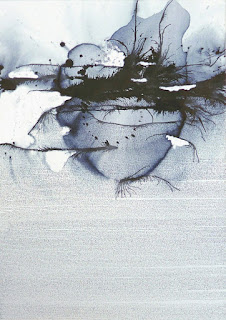1. Inspiration comes from everywhere.
When we asked him about where he gets his ideas from, I was honestly expecting something along the lines of research and observational drawings, but I couldn't have been more wrong. Mat gets his inspiration from pretty much everywhere:
"Music and films are a huge part of my life and have been since my spotty adolescence, so these both play a huge part in my inspiration and can often generate ideas for artwork. Also from old books about folklore, horror movies, bestiaries, cryptozoology, the occult, flora and fauna."
This was really interesting to me, as I always assumed that to be a successful illustrator, you had to focus on what's popular at the moment and what the client wants to see, as opposed to just what interests you. I think that maybe I should start incorporating my own interests into my illustration more from now on.2. It is possible to be a full-time illustrator and pay rent at the same time.
Though I know that there are people who illustrate full time and manage to make a living from it, I had always figured that most illustrators had a job on the side to help generate income and that it took years and years of hard graft to really be able to illustrate full-time. Though he admitted that generating income was definitely the most challenging part of being an illustrator, he also explained how, with the right balance of commission work and freelance projects, it's possible to make it your one and only job. Even if, like him, you are looking after your baby daughter full time as well.3. You don't have to be a butt kisser.
I've always thought that a large part of being a full time illustrator was regularly sending out emails and letters and samples of your work to potential clients in the hopes that one of the hundreds that you've contacted will like your work. I knew that attracting clientele was part of the job, but the idea of grovelling for work kind of filled me with dread. I was so happy when I found out that, like me, Mat isn't so keen on sending out mass-emails of his work either. Though he does send the occasional email to people he think will "dig my work", he focuses most of his energy on creating a good internet presence via his website, twitter, blog and Etsy shop to name a few. It was so refreshing to hear that good work does get recognised and that, with a good enough reputation, people will come to you.
So all in all, I would say that this project has been a fruitful one. Just to finish off, I'd like to share a piece of advice that Mat gave us:
"Put the hours in and draw, draw, draw. Focus on drawing things you have a genuine love for rather than trying to create work that doesn't mean anything to you. Don't expect to make a lot of money. Don't copy other artists and don't be a dick."







